Bringing Back the (Flax) Fields of Gold
American farmers want to grow flax, but there's little infrastructure to support them. These projects are hoping to change that.
Bringing Back the (Flax) Fields of Gold
American farmers want to grow flax, but there's little infrastructure to support them. These projects are hoping to change that.
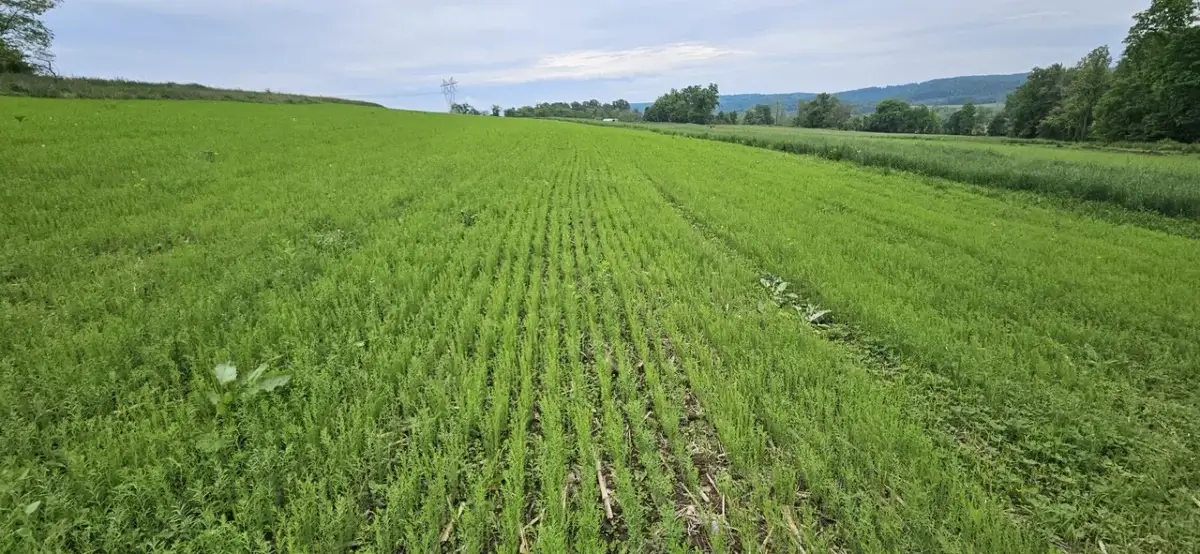
Four acres of flax at Pasture Song Farm.Photography by Zoe Schaeffer.
On a humid summer day in southeastern PA, farmers have traveled hours to Pasture Song Farm to see flax in the field. Farmer Jeremy Dunphy stands next to his four-acre test plot, brimming with flax as a cover crop, sharing what he’s learned with a crowd of 20 farmers, textile artists, designers, and educators. While he calls it the easiest plant he has grown, he knows there are hesitations.
Dunphy is part of the PA Flax Project, founded in 2020. The group aims to reshore the flax industry in North America, and they’ve received a three-year, $1.7 million USDA Agricultural Marketing Service Organic Marketing Development Grant (OMDG) to grow flax for linen on 12,000 acres, using a cooperative model where farmers would share in the profits. The PA Department of Agriculture recently designated flax as a specialty crop, opening up grant funding for farmers. Growers hope other states will follow with that designation.
Farmers can grow flax. What they need is a supply chain and market that can handle the harvest.
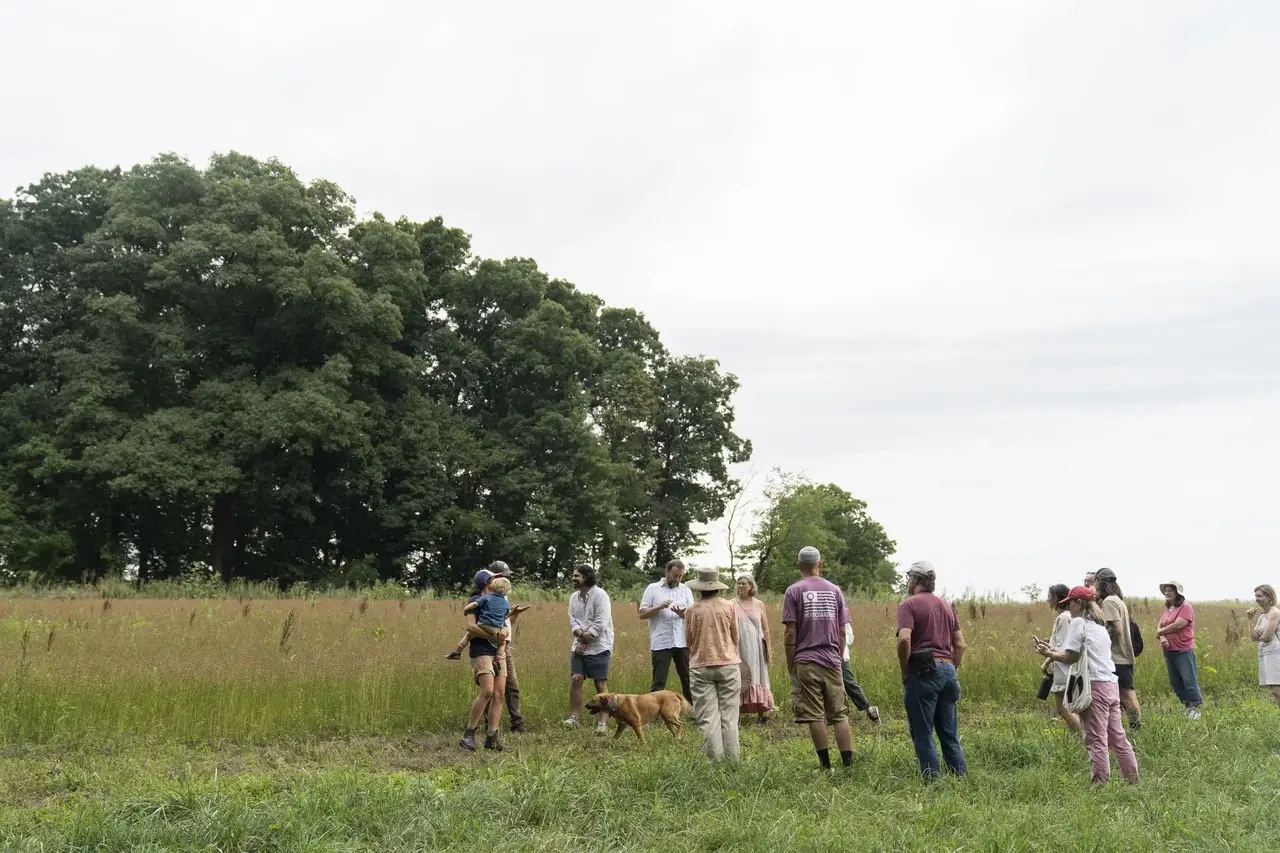
Home grown
Although US farmers don’t grow flax much anymore, that was not always the case.
Flax has been cultivated since ancient Egypt, and in the US since colonial times, when European settlers brought seeds to places such as Philadelphia, where it was mostly hand-processed and spun. During World War II, the Works Progress Administration, built three processing mills to get the industry going and put farmers back to work after the Depression. At one time, 18,000 acres of flax were grown in Oregon, with 14 processing mills, spinning and weaving throughout the Willamette Valley. They sold fiber straight to the war efforts, but those contracts dried up around the same time synthetics became popular with the American consumer. In early American history, flax had been less economically competitive than cotton, which was able to exploit slave labor, and it made use of the cotton gin, which made its production faster and cheaper.
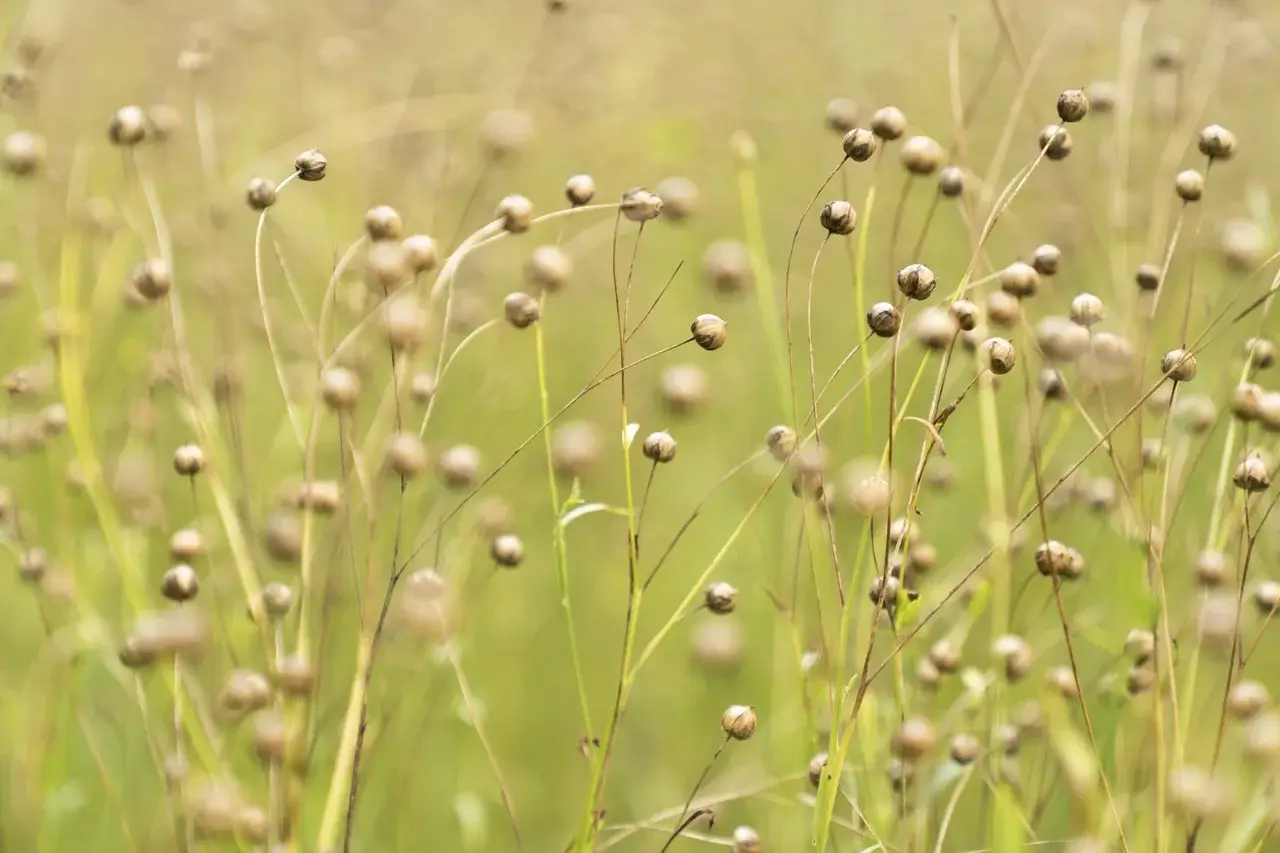
Now, as the textile industry looks at sustainable alternatives to popular petroleum-based fabrics, low-impact linen, made from flax, is in the spotlight. Organic flax requires little irrigation, and it can remediate soil and promote biodiversity. While most flax fiber is made into linen for clothing, it is also being used for biocomposites for automotive interiors, sporting goods, and decorative home goods. Other parts of the crop are used for rope, paper, mulch, and animal bedding.
Flax takes about 100 days to go from seed to harvest, and once planted, it needs little tending. It is, however, labor-intensive to extract and prepare the fiber for spinning. At maturity, a puller machine grabs the crop’s stalk at the root to get it out of the ground. It is laid down in windrows in the field and then retted, a controlled process of loosening the long fibers from the stalk. Retting can be done in tanks or pools, or in the field where dew and rain do the work. After retting, the stalks are ready for scutching at a mill. Scutching takes the flax straw and separates the short fibers, long fibers, shives, and seeds, through mechanical crushing and threshing. After scutching, the fiber can be sold to send a spinner to be made into yarn and woven or knit into linen textiles. The issue is the lack of infrastructure. Right now, mid- to large-scale scutching mills are non-existent in North America, because there is not enough flax being grown to support an industry.
LEARN MORE
Find out why it’s time for the fashion industry to learn about regenerative agriculture.
Transporting large amounts of flax straw long distances to be processed is costly and environmentally damaging. Grower Shannon Welsh, co-founder of Fibrevolution in Alsea, OR and executive director of the North American Linen Association (NALA), would like to see at least a few processing facilities in strategic growing regions—on the two coasts and in the Midwest—to service existing growers.
“Not having [a scutching mill] is impeding the scaling of flax for fiber production here and why many farmers only grow flax on a smaller scale,” says Welsh. Each mill would require a $5-million to $10-million investment. If a mill is getting quality fiber, her model shows it could turn a profit in three years. “What flax fiber sells for in comparison to other fibers is quite high if the quality is good,” says Welsh. “In Europe, scutching mills are not subsidized and are self-sufficient.”
Where it all started
Because flax has not been grown at a commercial scale here since the mid-twentieth century, many growers make the pilgrimage to Europe to learn how to farm it and use the specialized equipment (pullers, balers, and turners). Robin Maynard Seaver of Green Mountain Linen in South Royalton, VT took her team to Belgium this summer to do that and to learn about how to use the puller she recently purchased. “There’s so much art to getting good fiber out of linen, because it’s not hard to grow, but you want the valuable long fiber.”
Patricia Bishop of TapRoot Farms started growing flax on her family vegetable farm in Port Williams, Nova Scotia, and processes up to 70 pounds a day. When she could not find smaller-scale equipment in Western Europe (where three quarters of all flax is grown), she enlisted an engineer friend to make braking, scutching, and hackling machines to clean and prep the flax fiber for spinning. Because the fibers are longer and need to be extracted from the flax stalk (which is about three feet tall), equipment is more mechanized than the kind used for cotton or wool, she explains.
LEARN MORE
Find out more about the PA Flax Project and its mission.
Much of the flaxseed in the world comes from France or the Netherlands and is licensed like software. Domestic growers will buy seed from European growers with the agreement they won’t replant it. Farmers can grow flax for fiber or flax for seeds. Welsh has grown and sold their seeds for years at Fibrevolution. “There are multiple groups working on scaling up seed production in North America, because without more seed, we won’t be able to grow very much flax, and we don’t want to build mills if we are dependent on European seed.”
Seven years ago, Fibrevolution began working with Jennifer Kling, a professor at Oregon State University specializing in seed breeding. It has assisted in seed trials to breed new varieties of fiber flax for the North American market. “It takes seven to nine years to release a new variety and we’re almost at that mark,” says Welsh. It has also acquired seed from the OSU seed bank, for a variety developed in the 1960s during the last gasp of the linen industry in Oregon.
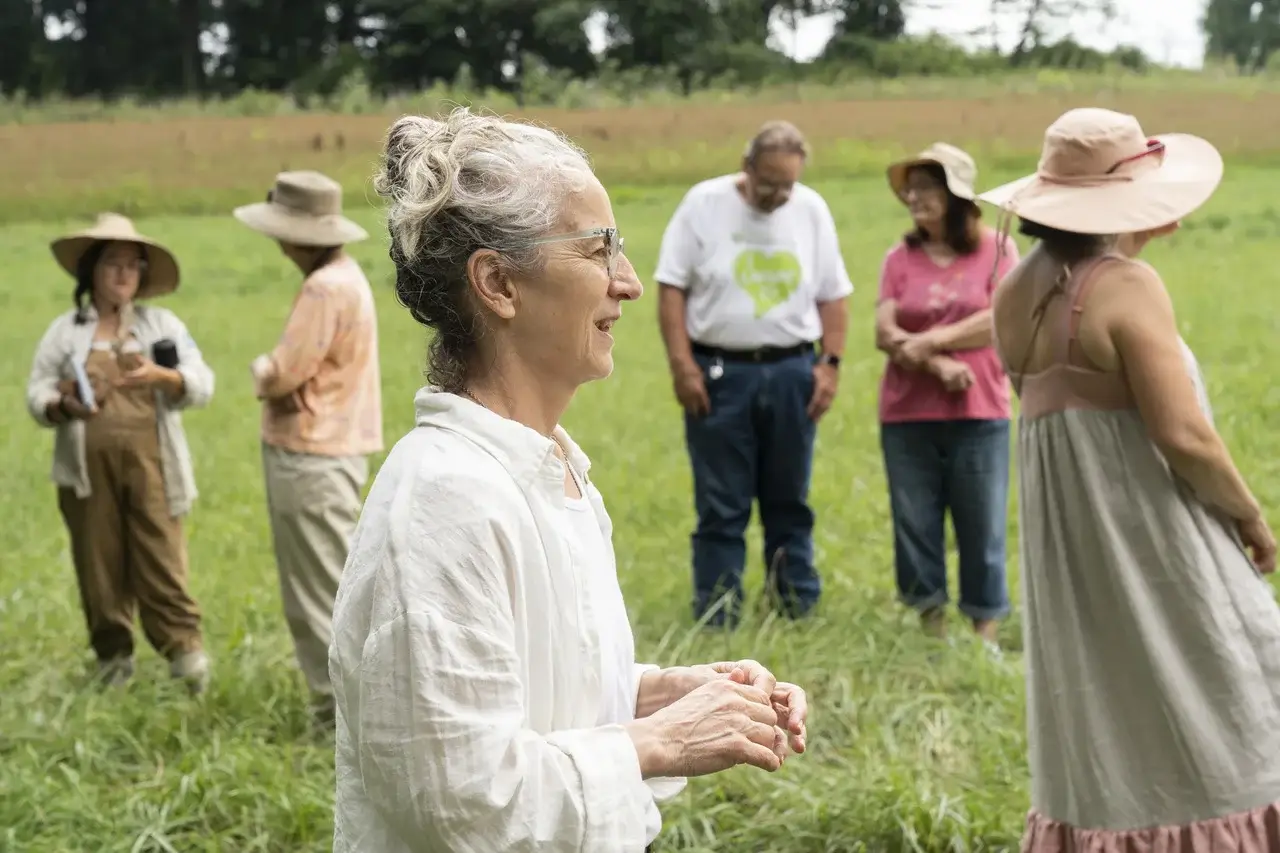
Heidi Barr, co-founder of the PA Flax Project, is wrapping up a trip to Europe to learn more about flax growing. “Flax farmers and scutchers have been in the trade for three to four generations,” she says. “We have much to learn and there is much potential for a long future of flax for linen in Pennsylvania and North America. “
Flax in demand
Welsh says NALA is contacted regularly by European spinners looking for more fiber to spin. “Demand is high and they are excited about us starting to grow and anxious for us to get to the point where we can sell fiber. There are also groups here exploring and working towards getting wet spinning, for finer yarns [dry spinning is for things such as rope], here in North America.”
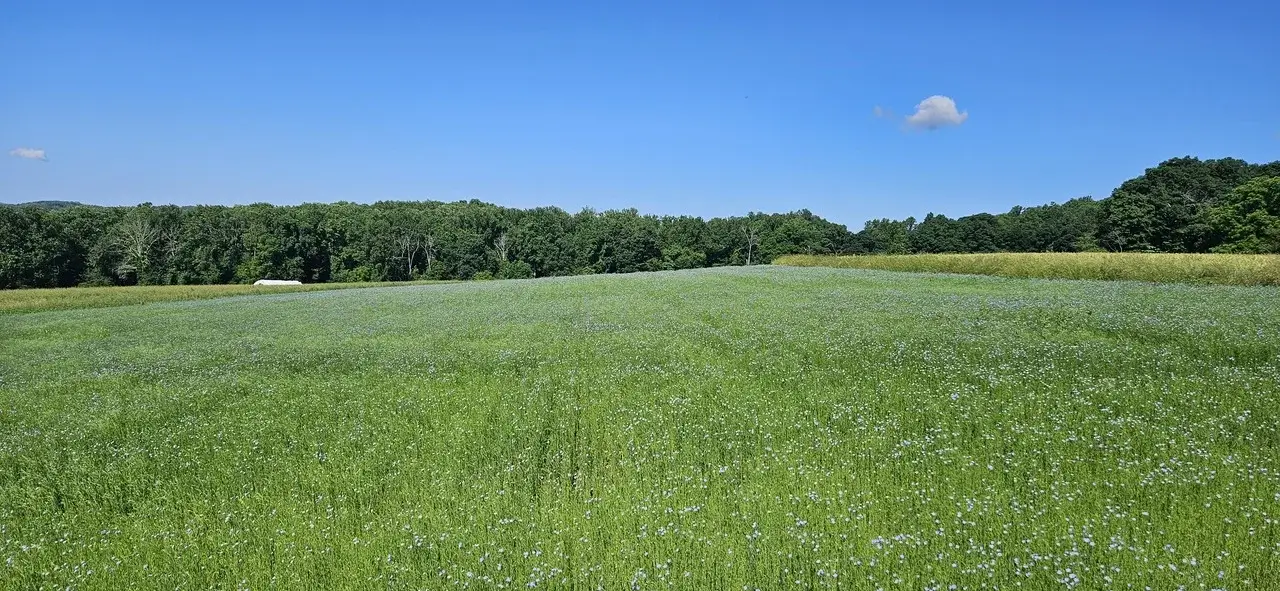
In 2024, global production currently totals 444,789 acres. Building a North American industry could help meet global demand. “If North America has operational scutching mills, fiber could be sold in the global marketplace, but it will take investment for the long haul,” says Bishop. She says if there’s more flax available to make into linen, consumers will choose natural fibers over synthetics.
“Growing and processing flax is our vision for the future for our farm and our community.”
Follow us
This work is licensed under a Creative Commons Attribution-NoDerivatives 4.0 International License.
Want to republish a Modern Farmer story?
We are happy for Modern Farmer stories to be shared, and encourage you to republish our articles for your audience. When doing so, we ask that you follow these guidelines:
Please credit us and our writers
For the author byline, please use “Author Name, Modern Farmer.” At the top of our stories, if on the web, please include this text and link: “This story was originally published by Modern Farmer.”
Please make sure to include a link back to either our home page or the article URL.
At the bottom of the story, please include the following text:
“Modern Farmer is a nonprofit initiative dedicated to raising awareness and catalyzing action at the intersection of food, agriculture, and society. Read more at <link>Modern Farmer</link>.”
Use our widget
We’d like to be able to track our stories, so we ask that if you republish our content, you do so using our widget (located on the left hand side of the article). The HTML code has a built-in tracker that tells us the data and domain where the story was published, as well as view counts.
Check the image requirements
It’s your responsibility to confirm you're licensed to republish images in our articles. Some images, such as those from commercial providers, don't allow their images to be republished without permission or payment. Copyright terms are generally listed in the image caption and attribution. You are welcome to omit our images or substitute with your own. Charts and interactive graphics follow the same rules.
Don’t change too much. Or, ask us first.
Articles must be republished in their entirety. It’s okay to change references to time (“today” to “yesterday”) or location (“Iowa City, IA” to “here”). But please keep everything else the same.
If you feel strongly that a more material edit needs to be made, get in touch with us at [email protected]. We’re happy to discuss it with the original author, but we must have prior approval for changes before publication.
Special cases
Extracts. You may run the first few lines or paragraphs of the article and then say: “Read the full article at Modern Farmer” with a link back to the original article.
Quotes. You may quote authors provided you include a link back to the article URL.
Translations. These require writer approval. To inquire about translation of a Modern Farmer article, contact us at [email protected]
Signed consent / copyright release forms. These are not required, provided you are following these guidelines.
Print. Articles can be republished in print under these same rules, with the exception that you do not need to include the links.
Tag us
When sharing the story on social media, please tag us using the following: - Twitter (@ModFarm) - Facebook (@ModernFarmerMedia) - Instagram (@modfarm)
Use our content respectfully
Modern Farmer is a nonprofit and as such we share our content for free and in good faith in order to reach new audiences. Respectfully,
No selling ads against our stories. It’s okay to put our stories on pages with ads.
Don’t republish our material wholesale, or automatically; you need to select stories to be republished individually.
You have no rights to sell, license, syndicate, or otherwise represent yourself as the authorized owner of our material to any third parties. This means that you cannot actively publish or submit our work for syndication to third party platforms or apps like Apple News or Google News. We understand that publishers cannot fully control when certain third parties automatically summarize or crawl content from publishers’ own sites.
Keep in touch
We want to hear from you if you love Modern Farmer content, have a collaboration idea, or anything else to share. As a nonprofit outlet, we work in service of our community and are always open to comments, feedback, and ideas. Contact us at [email protected].by Kathleen Webber, Modern Farmer
September 3, 2024
Modern Farmer Weekly
Solutions Hub
Innovations, ideas and inspiration. Actionable solutions for a resilient food system.
ExploreExplore other topics
Share With Us
We want to hear from Modern Farmer readers who have thoughtful commentary, actionable solutions, or helpful ideas to share.
SubmitNecessary cookies are absolutely essential for the website to function properly. This category only includes cookies that ensures basic functionalities and security features of the website. These cookies do not store any personal information.
Any cookies that may not be particularly necessary for the website to function and are used specifically to collect user personal data via analytics, ads, other embedded contents are termed as non-necessary cookies.
Though FLAX as a cover crop with several other uses need encouragement internationally.
Could someone direct me to growers in the Wisconsin area? I have some acreage that will be ready to plant Spring ’26 and would like to learn more about this crop from others who are growing in my region.
Thank you for an interesting view of the problem.
As someone who tries to wear only natural fibers – and thus pays for them! – I’m surprised the demand isn’t there for a domestic linen industry. What are the startup costs, I wonder, for a scutching mill? Presumably in the millions, but seems like an investment that would eventually be recouped.